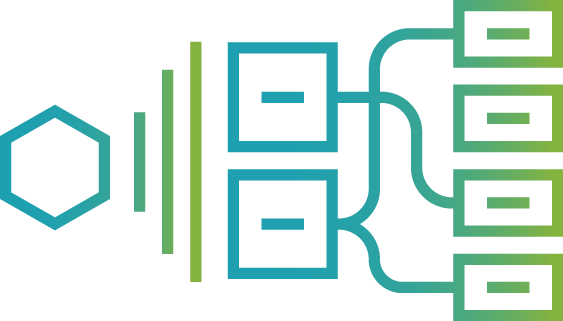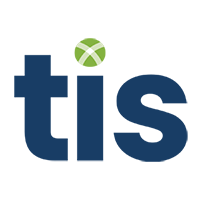At the turn of the century, treasury management was in the midst of a significant technology shift.
The years preceding 2000 had marked an era where the world’s leading companies were using locally installed or “on–premise” treasury platforms along with a variety of banking portals and Excel spreadsheets. Treasury groups were beginning to embrace the “digitization” of their financial workflows, and legacy processes surrounding the use of checks, physical cash, and paper-based reporting were steadily being replaced.
However, despite the advancements that Excel and localized treasury platforms represented at the time, companies still suffered from obvious drawbacks. For multinational companies, having disparate financial information siloed across a myriad of operating systems, spreadsheets, and business units created a constant source of strain. Without strong integration between any of a company’s financial or banking systems, tasks like executing a payment or reporting on cash positions took time-consuming, manual effort. And for companies operating with hundreds or even thousands of entities, vendors, and banks across the globe, on-premise platforms and siloed banking portals were simply not advanced enough to provide treasury teams with the automation, transparency, and control that they needed.
No one knew this better than Erol Bozak and Joerg Wiemer, the soon-to-be Co-Founders of TIS.
From Bank Portals & Excel to Cloud Software & APIs
At the start of 2000, Joerg Wiemer was serving as the SVP and Head of Treasury for SAP. As part of his role, Joerg was responsible for orchestrating SAP’s global payments and liquidity strategy. At the same time, Erol Bozak was serving as a lead architect for SAP’s newly-formed cloud services division and had a major role in developing the solutions that was being deployed for SAP’s clients around the world.
After getting to know each other through an EMBA program, Erol and Joerg realized they shared the idea that cloud technology, a relatively new innovation at the time, could revolutionize the disparate nature of corporate payments and cash management. In 2010, this shared belief would ultimately bring the two together to found TIS.
Now in 2022, Erol and Joerg remain on the frontlines of treasury technology innovation as over 160 multinational corporates leverage their cloud-based solution to achieve greater automation and control over their payments and cash. Today, they’re continuing to improve the capabilities offered through TIS by applying the latest enhancements in data analytics, business intelligence, cloud networking, and API programming.
TIS Co-Founders Discuss Treasury Technology in 2022 & Beyond
The following insights were derived through recent interviews with TIS co-founders Erol and Joerg, both of whom remain active at TIS today as Chief Product Officer (CPO) and Chief Strategy Officer (CSO), respectively.
Q: Given all that is happening with AI, blockchain, and cryptocurrencies, do you still believe cloud technology is the most transformative “tool” for treasury groups in 2022?
Answer from Erol Bozak: If you’re asking which technology is continuing to provide the most value for treasury teams, then yes. Although new “disruptions” like cryptocurrency and blockchain are gaining momentum, adoption and application within treasury is still limited. However, data shows that nearly two in every three companies today are using cloud solutions for treasury and payments management, and this number continues to grow. In reality, nearly every function treasury performs is impacted by cloud services, and as the software is democratized, the level of integration and automation being achieved is tremendous. Now, the capabilities of cloud software are being streamlined with the use of standardized API sets, and treasury and finance information is flowing across a global web of interconnected platforms in virtually real-time. None of this would be possible without the cloud.
Q: What are APIs and why are they adding so much value to the capabilities of cloud solutions?
Answer from Erol Bozak: “API” stands for application programming interface, and it is a programming language that is used by operating systems to interact and communicate. The reason APIs are proving so transformative today is because, as the language has been standardized, all the various cloud solutions an organization uses can now communicate and share data without the need for explicit human commands.
Where treasury is concerned, an API might be developed to pull statements and data from a company’s banks into a centralized payment solution. Then, APIs can be used to transmit the data from this payment solution into a TMS, ERP, or HR system for more analysis. Going a step further, APIs may also be used to submit payment requests from an ERP or TMS to a centralized payment hub for transmission to banks, thereby automating both payment execution and subsequent cash reporting.
In practice, the API logic to support these data streams only needs to be configured once, and then payments data will begin flowing automatically between the systems, often in real-time, without any manual or “human” effort. This is a monumental leap forward from where treasury technology was only a few years ago.
Q: What’s the most common challenge you are confronted with by treasury groups that you service today?
Answer from Joerg Wiemer: Depending on the size and maturity of the company, the main challenges that we see for treasury differ. For companies that are just now transitioning to cloud-based treasury systems, the biggest challenge is figuring out how to streamline and automate the connection between all of their various entities, operating systems, and data sets. For multinational companies with hundreds or thousands of business units and bank accounts, there’s a whole network of activity to map out and synchronize, and this process takes time.
However, for companies that have already unified their global technology framework, the more pressing issue is ensuring the quality of the data being captured and understanding how to effectively leverage it. This is a problem because, while many companies are collecting more data than ever before, they do not have the right platform in place to organize and analyze it. What we’re trying to help treasury achieve with our solutions is an end-to-end workflow for performing global data aggregation and analysis so that they can move beyond the menial tasks of data standardization, and spend more time on strategic functions related to data application.
Q: What’s the largest shift you expect to witness in the treasury environment over the next decade?
Answer from Erol Bozak: I think the largest shift we will see comes back to how quickly and efficiently vast amounts of data can be aggregated and analyzed. We’ve already talked about the impact that cloud solutions and APIs are having on data transmission and cross-platform integration, but once you layer on enhanced BI and AI tools, the level of insight and granularity you’ll achieve over your daily workflows will be unparalleled. Once companies achieve global system integration via cloud and API technology and are able to aggregate their company’s data, applying intuitive BI solutions to help analyze, visualize, and apply this data is the obvious next step. And as the BI and AI applications available on the market are democratized, access to these capabilities will be affordable for regional SMBs and global multinationals alike, and the results will be transformative.
Q: What’s the most important step that treasury groups can take to prepare for impending technology shifts?
Answer from Joerg Wiemer: I’m a firm believer that ongoing education and experience is the best way to prepare yourself and your company. Given the pace of change in today’s treasury landscape, it’s not enough for treasurers to only have visibility to what is happening within their own organizations; they must also be aware of what treasury teams at other companies and in entirely different industries are experiencing. Because so many new tools and solutions are being applied across so many different areas of treasury, practitioners could benefit from a broader view to prepare themselves for impending change. Joining industry roundtables, attending conferences and webinars, subscribing to treasury media outlets, and networking with your banking and software vendors are all great ways to start.






